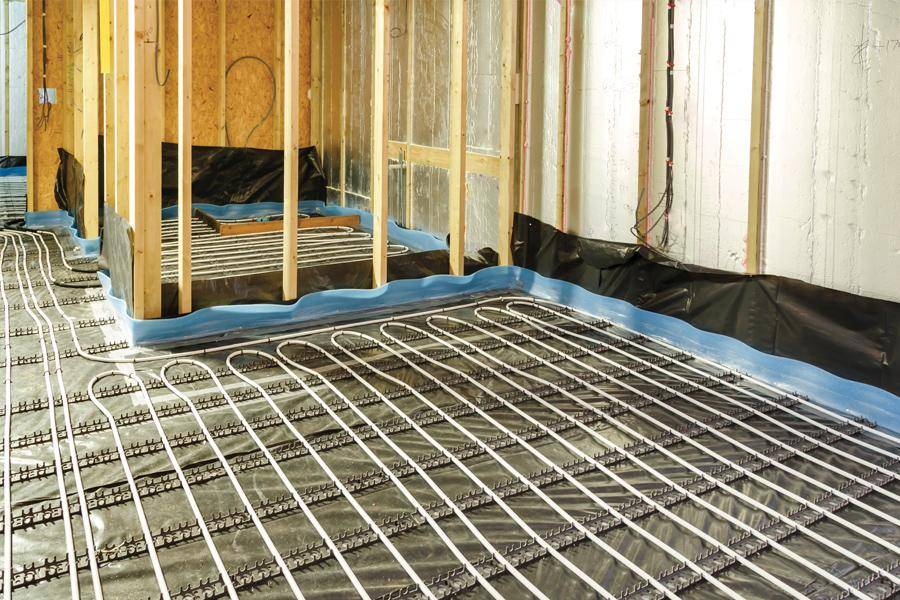Instarmac technical training and site support managers, Martin Pouncey and Alan Collins, offer help with this growing category of installation
The demand for underfloor heating is booming. Homeowners and property developers are moving away from traditional heating and turning towards underfloor heating, and we can understand why.
Running costs are lower, there’s better distribution of heat making homes much more comfortable, zone heating allows people to heat rooms in their home differently, and by taking radiators out we can create more space in our homes.
Although there are hundreds of systems on the marketplace, the three main types we come across are:
- Inscreed – This is when hot water pipes are set within the screed itself.
- Retrofit warm water systems – This incorporates an insulated board system.
- Electric wire systems – This is when heat is generated by forcing electricity through the cables – a similar concept to a coil in a hairdryer.
When it comes to installing underfloor heating, most installers come across the same type of issues. Here are our best tips to alleviate the most common issues when levelling over underfloor heating.
Tip 1: Ensure the subfloor is prepared correctly and the right materials are used. Most systems require subfloors to be perfectly flat before installing insulation boards. In many cases pre-smoothing is required but overlooked. Failing to pre-smooth will result in cracking adhesive and tile joints – an issue that will cause you no end of problems in the future.
Tip 2: When bonding the boards to different substrates, ensure to follow the manufacturer’s instructions. 100% coverage is always required when bonding the boards to the subfloor.
Tip 3: Part of the preparation for inscreed systems is heat commissioning. This should be done prior to any product being applied to the substrate. It is at this point that any cracking or thermal expansion will occur. To heat commission effectively you need to slowly increase the water temperature by 5°C per day, up to the systems maximum temperature. When you have reached this temperature, slowly decrease the system by 5°C per day until it reaches equilibrium. This needs to be carried out on the manifold and not the room or boiler thermostat.
If you are using a retrofit system, you need to pressure test the system at this stage to ensure there aren’t any leaks.
Tip 4: Always ensure cables or pipes are secured to the floor. Use the appropriate clips and tapes to secure the cables before applying a smoothing compound. This will prevent the cables from floating to the surface during the wet stage.
Tip 5: If you are working with insulation boards on either timber or concrete substrates, we would always recommend using an alkaline resistant scrim tape on the board joints. This will minimise any cracking that can occur due to micro movements on the edge of the board.
In October’s TSJ, we will explore beyond the preparation stage to product selection and installation. g
01827 254402
www.instarmac.co.uk








